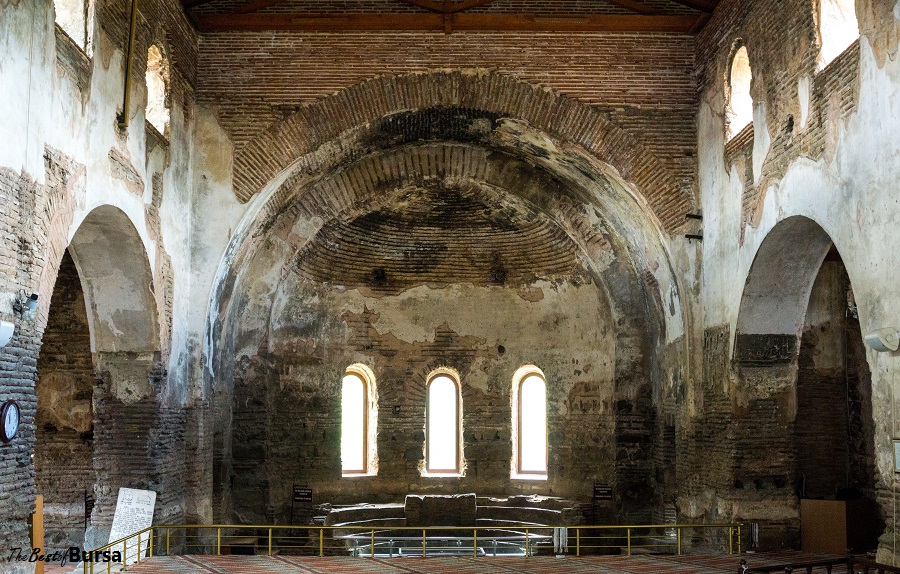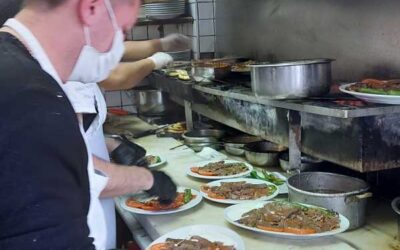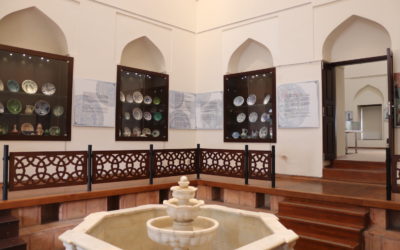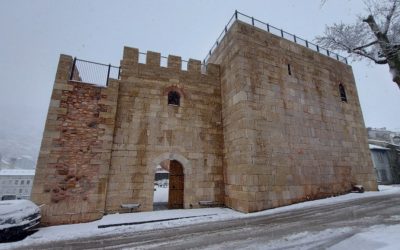Just about an hour’s drive east of Bursa’s city center, hugging the shore of a freshwater lake and surrounded by olive tree-blanketed hills, lies the little town of Īznik. At first glance, it seems hard to believe that this traditional Turkish farm town was at one time one of the most important cities in the region and played a crucial role in the history of a number of civilizations and empires. To many people, Īznik is probably better known by its ancient name, Nicaea.
Officially founded in 316 BC by Antigonos, one of Alexander’s commanders, Nicaea’s history is tumultuous. It was a prominent Greek town in the Bithynian Kingdom until 72 BC when Bithynia came under Roman rule, after which the city still enjoyed great importance. Emperor Hadrian himself visited the city in 123 AD. In 258 AD, Nicaea was sacked by the Goths, but by the time of the birth of the Byzantine Empire, Nicaea had rebounded into a large and prosperous city. In 325 AD, Constantine convened the first Christian Ecumenical Council in Nicaea, which drafted the still-influential Nicene Creed. After Constantinople became the Byzantine capital city, Nicaea’s importance waned. Nonetheless, the city hosted another Ecumenical Council in 787 AD, which aimed to clear up the controversy around the use of icons.
In 1081, Nicaea fell to the Turkish Seljuk dynasty and was renamed Īznik. This was short-lived, however, and the Byzantines regained the city in 1097 during the First Crusade. Following the 1204 capture of Constantinople by the Fourth Crusade, Nicaea became the prosperous capital of the subsequent Nicene Empire. This title lasted until 1261, when Constantinople was recaptured and  the Byzantine Empire was restored. With the rise of the Ottoman Empire in the early 14th century, Nicaea/Īznik was captured by Orhan Gazi in 1331 and served as the de facto Ottoman capital for a few short years. In the 16th and 17th centuries, Īznik grew into a world center for the pottery industry and became renowned throughout the Empire for its beautiful, skillfully crafted tiles, a fame that is now being reclaimed by Īznik’s craftspeople. In the 1920-1922 Independence War, Īznik was heavily damaged, and today the town appears to be a simple, peaceful farming village set against a beautiful natural backdrop.
the Byzantine Empire was restored. With the rise of the Ottoman Empire in the early 14th century, Nicaea/Īznik was captured by Orhan Gazi in 1331 and served as the de facto Ottoman capital for a few short years. In the 16th and 17th centuries, Īznik grew into a world center for the pottery industry and became renowned throughout the Empire for its beautiful, skillfully crafted tiles, a fame that is now being reclaimed by Īznik’s craftspeople. In the 1920-1922 Independence War, Īznik was heavily damaged, and today the town appears to be a simple, peaceful farming village set against a beautiful natural backdrop.
Wars, earthquakes, weather, changing governments, and centuries of destruction and reconstruction have all taken their toll on Nicaea. Today, it takes a little imagination to envision the town of Īznik as a once proud and prosperous ancient city. Sheep graze free-range in grassy areas. Tractors line cobblestone streets. Houses appear to be in disrepair. Many of the ancient structures lie in ruins. But if you keep your eyes peeled and dig a little deeper, you will find remnants of many of Īznik’s past eras and easily realize city’s historical and cultural value. This rich heritage in 2014 landed Īznik on the UNESCO World Heritage Center’s Tentative Site List for Turkey.
Here are a few photos of some of the remnants of the city’s bygone eras…
Īznik was built in a traditional Hellenstic style with two main streets intersecting at the center of town and radiating outward to four main gates. The gates and walls have been damaged, rebuilt, and fortified over the centuries. Three of the four gates still stand today. In the photo above, visitors explore the Yenişehir Gate on the south edge of town.
This photo reveals what is left of Nicaea’s original north-south main street. This remnant is located about three meters below the current street level. You can find this hidden gem below the street next to Murat I Hamam.
The old Roman amphitheater, above, is not currently open to the public but can be glimpsed from the street. It was apparently constructed in the 2nd century AD.
The above photo shows one of the domes in the Ayasofya-Orhan Mosque, located at the city’s main intersection. Originally constructed in the 6th century by Emperor Justinian as the Aya Sofya Church, the Ecumenical Council of 787 met here. The Ottomans converted the building to a mosque in 1337. Today, the building reveals a unique blend of Christian and Muslim heritage.
This monument on the south edge of town stands to remember the Central Asian ethnic groups that helped the Seljuk Dynasty conquer Īznik in the late 11th century. The Seljuks were a Turkish people heavily influenced by Persian culture. At one time, the Seljuk Dynasty stretched from Turkey’s west coast well into Central Asia. Nicaea returned to Byzantine control in 1097 during the First Crusade.
The Ottoman Empire is the most recent in the long string of empires to control Īznik. Naturally, the most well-preserved buildings in the city are those built during the Ottoman era. The Īznik Museum, above, is housed in the Nilüfer Hatun Imareti, built in 1388 by Murat I. This building originally served as a lodge for a local fraternal society and later was converted into a soup kitchen. Now a museum, the building is undergoing renovation and not open to the public at this time.
Visitors sip tea and window shop in the tile bazaar behind the Murat I Hamam (bathhouse). The hamam is being renovated into a cultural center.
The Süleyman Pasha Madrasah, built in the first half of the 14th century, is one of the first madrasahs (religious schools) in the Ottoman Empire. Today, the madrasah serves as a lovely tea garden and tile bazaar, housing a number of local artisans’ tile workshops.
In the 16th and 17th centuries, Īznik became world-renowned for its handcrafted pottery. Īznik tiles line the interiors and exteriors of many mosques and palaces throughout the Ottoman Empire. At one time, many skilled craftsmen and kilns operated in Īznik. Today, those kilns are in ruins, but Īznik is slowly regaining its name as a place to buy excellent handcrafted pottery and tiles. The beautiful pieces pictured above were for sale in a shop in the Süleyman Pasha Madrasah.
A craftswoman hand paints a piece of tile in her workshop in the Süleyman Pasha Madrasah.
Today, Īznik looks more like a peaceful farm town than it does a glorious ancient city. Layers upon layers of history are contained inside the city’s ruined walls. And even as these layers of history are slowly uncovered, life here goes on as it has for a long, long time.
Surrounded by hills, Īznik Lake is quite beautiful and a lakeside stroll is well worth the time.
Excavations and renovations continue in Īznik. One fascinating find last year was the sunken foundation of what is believed to be St. Neophytos Church. This site is under water about 20 meters from the shore of Īznik Lake and was discovered during aerial surveys. Likely built in the 4th century, the church and the surrounding landscape probably collapsed in a massive 8th century earthquake. The site is being prepared to serve as an underwater museum.
Notes on visiting Īznik
- Īznik is about an hour east of Bursa’s city center and is accessible by car or bus. Frequent buses and minibuses run from Bursa’s bus terminal to Īznik’s little otogar.
- Once in Īznik, the town is walkable and easy to navigate. An information booth is prominently located at the town’s main intersection near the Ayasofya-Orhan Mosque.
- If you’re going to buy anything on your visit to Bursa, consider a piece of Īznik tile or pottery. The handcrafted tile craft is being revived and some beautiful pieces can be found in shops throughout the town.
- There are a handful of inns and hotels in Īznik if you’d like to stay the night. We’ve had a good experience at Cem Otel, a nice hotel on the west edge of town overlooking the lake.




















Iznik is one of our ‘perpetual’ stop-overs and has been for many years now. Love the place for a few quiet days in a very typical Turkish town.
On the surface, it does look like a typical Turkish town. But I can’t think of many Turkish towns that can claim to have been the capital city of three important empires–and have the ruins to prove it. At any rate, it definitely is a peaceful place for a little rest.